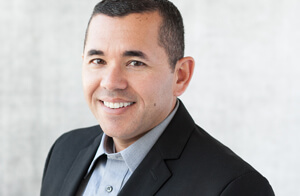Nonprofit Partnership: Are You Ready?
I recently had a client who was having difficulty in the early stages of partnership negotiation. After the meeting, I asked them privately, “Why do you really want to do this?” To which they responded, “Well, they [the other partner] asked.”
I understand their desire to be opportunistic and take risks, but because they hadn’t developed a clear reason for why partnership might be a good strategy for them, the process was suffering – and they were suffering along with it.
Asking and answering some key questions about what your organization wants from a collaboration or strategic restructuring is part of a “readiness” phase that is important for laying a strong foundation for the rest of the partnership process.
The following questions – Why? When? Who? and How? – can be helpful in readying your organization for a nonprofit partnership:
WHY?
Partnerships – in organizational life as in our personal lives – take work. Knowing why you are pursuing collaboration or strategic restructuring is critical to making the effort worthwhile. You may be hearing that it’s a good idea, but partnering because someone else is telling you can be the worst possible idea. Your organization has many strategies to choose from in achieving its mission, and partnering is only one of them. Consider whether it is really the right strategy for you by having a clear idea of what it is you are trying to achieve (Will you be able to serve more people? Will you grow? Will you become financially better positioned?) and how you expect a partnership will get you there. Answering the “why” question is the most important step toward being ready to do this work.
WHEN?
Timing is everything. Partnership may be the right strategy, but maybe it’s just not the right time. Consider whether you have other organizational development issues that need tending to. These will likely pop up in a partnership negotiation process, so you might as well tackle them first so you can give them the focused attention they deserve. It’s also important to consider whether your leadership staff and board can commit the time that a thoughtful and deliberate strategic restructuring process requires. Once you answer these timing questions for yourself, you can approach a potential partnership with the confidence and peace of mind that comes with real readiness.
WHO?
Finding the right partner, or partners, is critical – but it is equally important to know who you are as an organization when you come to the negotiation table. Are you clear about your strategic advantages? Do you offer the best programs in the area? Do you serve a particular niche? Ask yourself what makes your organization a good potential partner. Then consider those areas you wish to strengthen through a partnership. Understanding the assets you bring to the table, as well as what you seek in a potential partner, will help you be ready to engage in a productive exploration and/or negotiation process that leverages your organization’s strengths in meeting your goals.
HOW?
It’s not all about merger. There is a range of forms that collaboration and strategic restructuring can take. Understanding this array of partnership options can help empower your organization to pursue the strategy that is right for you. Consider talking to other organizations that have engaged in partnerships or explore case studies that can give you a sense of these options and what you might expect from each. Recognizing the breadth of possibilities can help bring staff leadership and board members to the negotiation table in a state of readiness; when it is clear that merger is not necessarily a foregone conclusion, it makes way for the kind of openness and creative thinking needed for a rigorous process and successful outcome.
The reality is that even after thinking through these questions, you may still be uncertain whether a partnership is what is best for your organization. The good news is that the partnership exploration and negotiations process will help bring that answer to light. It is having asked yourself these questions that will ready you to make the most of the process for a positive experience and actionable results.


Comment section